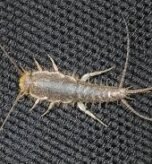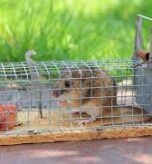The presence of cockroaches in a home often brings a sense of dread. Beyond their unsettling appearance, a key question arises: do cockroaches bite? While direct cockroach bites are rare, their true danger lies in their ability to spread allergens and harmful bacteria, which can impact your health. This guide will demystify the realities of cockroach interactions, detail the health risks they pose, and provide effective strategies for prevention and eradication.
The Real Dangers of a Cockroach Infestation
The World Health Organization (WHO) recognizes cockroaches as “unhygienic scavengers.” Their hazardous nature goes far beyond being a simple nuisance and can significantly impact public health.
Allergens and Asthma Triggers
Cockroaches are a common source of indoor allergens. The allergenic particles come from their excrement, shed body parts, and saliva. When these particles become airborne, they can settle on furniture and carpets, triggering allergic reactions. Symptoms can include sneezing, coughing, itchy eyes, and skin rashes. Furthermore, exposure can significantly worsen asthma symptoms, especially in children.
Carriers of Harmful Bacteria
As cockroaches move through unsanitary environments like trash and decaying matter, they pick up numerous types of bacteria—up to 33 different kinds. They can then transfer these pathogens to your food, countertops, and utensils. Notable bacteria they carry include Salmonella, E. coli, and Staphylococcus, which can cause food poisoning and other gastrointestinal illnesses.
Separating Myth from Fact: Do Cockroaches Bite Humans?
The idea that cockroaches bite people is a common concern, yet it is a relatively uncommon event. Cockroaches generally prefer to avoid human contact and will usually flee when approached.
Why a Cockroach Might Bite You
So, do cockroaches bite? Yes, but primarily under specific, extreme circumstances.
- Severe Infestations: Bites are most likely to happen in homes with a massive cockroach overpopulation where their normal food sources have run out. In these desperate situations, they may seek alternative food.
- Opportunistic Feeding: These omnivorous scavengers might resort to nibbling on dead skin, calluses, fingernails, or food residue left on a person’s skin.
- Nocturnal Habits: Since cockroaches are most active at night, bites are more likely to occur while you are asleep and unaware.
- Historical Context: In the past, there have been documented cases of more severe bites on ships with vast infestations and limited food, leading cockroaches to gnaw on sailors’ skin and nails.
How Cockroaches Bite
Cockroaches are insects with piercing mouthparts like mosquitoes, cockroaches create small abrasions through a grinding action rather than a single puncture. While an American cockroach has a bite force 50 times its body weight, this is generally not enough to easily break intact human skin in a single bite.
What Do Cockroach Bites Look Like?
Accurate identification of a cockroach bite is important for proper treatment. The bites typically appear as small, red bumps or welts. They can sometimes be larger and more painful than they are itchy. Unlike bed bug bites, which often appear in clusters or lines, cockroach bites are usually more spread out and individual.
How to Treat a Cockroach Bite
Prompt and proper treatment can alleviate discomfort and reduce the risk of infection.
Immediate First Aid for a Bite
The first and most crucial step is to wash the affected area thoroughly with mild soap and warm water. This removes bacteria and any residual cockroach saliva. Afterward, applying a cold compress can help reduce swelling and itching.
Over-the-Counter and Topical Treatments
After cleaning the area, apply an antiseptic or antibiotic cream to prevent infection. You can use an anti-itch or hydrocortisone cream to manage any persistent itching. For more severe reactions, oral antihistamines may be beneficial.
A Crucial Piece of Advice: Don’t Scratch!
It is imperative to resist scratching the bite. Scratching can break the skin, introduce bacteria from your fingernails, and significantly increase the risk of a secondary infection or scarring.
Preventing Cockroach Bites by Preventing Infestations
The most effective way to prevent cockroach bites is to prevent an infestation from starting. This requires a proactive, multi-faceted approach.
Keep Your Home Clean and Dry
Maintaining a high level of cleanliness is essential.
- Consistently wipe down kitchen counters and clean under appliances.
- Wash dirty dishes immediately after use.
- Store all food, including pet food, in airtight containers.
- Keep trash in tightly covered containers and empty them frequently.
- Promptly repair any leaky pipes or faucets to control moisture.
Seal Entry Points to Your Home
Prevent cockroaches from getting inside in the first place.
- Inspect and seal all cracks and holes in your floors, walls, and around pipes.
- Use caulk or weatherstripping around doors and windows.
- Install door sweeps on all exterior doors.
When to Call a Professional for Help
If your own efforts are not enough to manage a cockroach problem, or if you see live insects frequently, it is time to call a professional pest control service. They have the expertise and specialized tools to develop a customized treatment plan that will safely and effectively eradicate the infestation.
Conclusion: A Pest-Free Home for Your Health
While the direct threat of a cockro-h bite is rare, the real danger of these pests is their ability to trigger allergies and spread harmful bacteria. A proactive approach to home hygiene is your best defense. If an infestation persists, contacting a professional is the most effective step toward achieving a long-lasting, pest-free living environment and ensuring your peace of mind.



